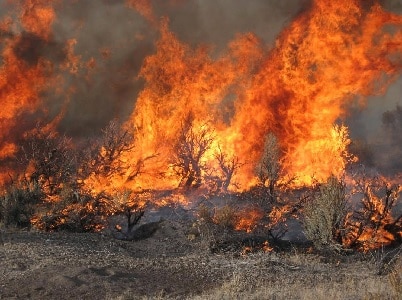
Fuel Breaks That Work
This fact sheet provides a framework for using established fuel breaks for protecting sagebrush ecosystems that are prone to fire due to the invasion of nonnative annual grasses.

This fact sheet provides a framework for using established fuel breaks for protecting sagebrush ecosystems that are prone to fire due to the invasion of nonnative annual grasses.



Great Basin Fact Sheet No. 5: Fuel Breaks That Work
By: Kevin Moriarty, Lance Okeson, and Mike Pellant
Summary:
Invasive grasses like cheatgrass and medusahead are continually increasing, converting native sagebrush-steppe plant communities into nonnative annual-dominated grasslands. In lower elevations of the Northern Great Basin’s sagebrush-steppe, the fire return interval
has been reduced from 50-100 years to less than 10 years in some places. These changes are having highly negative effects on sagebrush obligate species, including greater sage-grouse. This fact sheet provides a framework for the placement, use, and effectiveness of established fuel breaks for protecting sagebrush ecosystems.
In Brief:
Click here or on the image below to download a PDF of the full fact sheet.
This fact sheet is part of the Great Basin Fact Sheet Series compiled collaboratively by WAFWA, USFS, BLM, NRCS, RMRS, ARS, USGS, and FWS. The series provides land managers with brief summaries of current science concepts and management strategies related to conservation and restoration of the sagebrush sea.